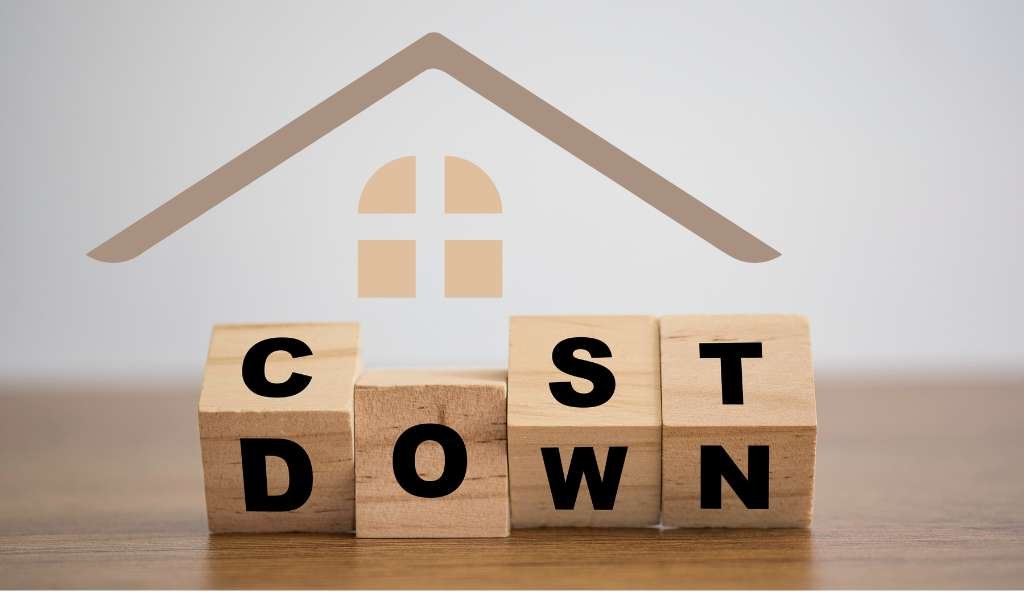By using clever techniques throughout your project, you may reduce house construction cost without sacrificing comfort, design, or quality. Although building a house requires a large financial outlay, expenses may be efficiently controlled with careful planning. Every stage of construction may be customized to fit your budget, from choosing reasonably priced, long-lasting materials to making astute design decisions.
This article offers helpful suggestions for creating a stunning, well-built house while controlling costs. Learn useful tips for reducing expenses, making the most of available resources, and creating a house that fulfills your vision without going over your budget. Make wise decisions, stick to your spending plan, and experience long-lasting fulfillment.
Knowing the Fundamentals of Low-Cost Construction

The first step in creating an economical house is having a thorough grasp of the building process. You can make wise choices at every level if you are aware of the procedures and phases involved. Knowing what goes into a building project gives you clarity and cost management, from choosing a straightforward architectural design to reducing intricate structural components. Avoiding needless costs and typical building problems is another benefit of adhering to conventional methods.
Having Reasonable Budgetary Expectations
A reasonable budget must be established. To determine where you can most efficiently deploy dollars, break down your budget into several areas, such as labor, supplies, and permits. This thorough method helps provide the groundwork for cost-effective planning and avoids overpaying in any one area. Setting priorities for the things that are most important to you and your future house is what realistic budgeting is all about, not sacrificing quality.
How to Make a Successful Construction Budget
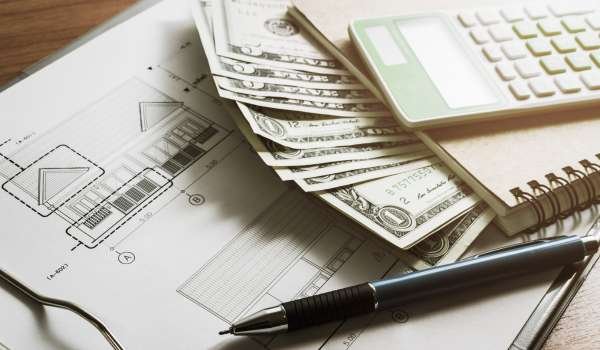
Creating a realistic building budget entails breaking out all costs, from significant acquisitions to little tweaks. Make a spreadsheet that keeps track of projected expenditures, material estimates, and possible costs for unanticipated problems. A contingency reserve of ten to fifteen percent should be included to account for unforeseen expenses that could occur during construction. In addition to controlling expenditure, a thorough budget is a useful tool for maintaining organization and reducing stress throughout the building process.
Selecting Low-Cost Building Materials Without Sacrificing Quality
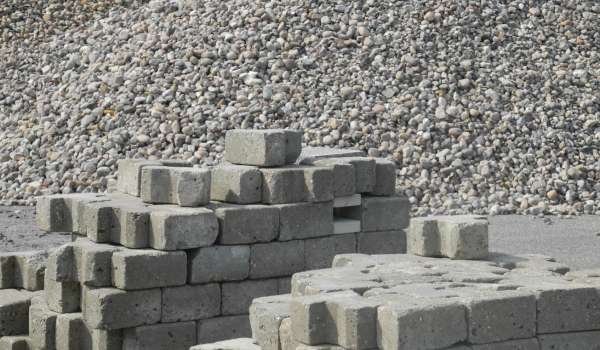
High quality doesn’t have to be expensive. Selecting affordable, long-lasting materials may guarantee long-lasting quality while drastically lowering building expenses. Think about these reasonably priced yet sturdy substitutes:
- Fiber Cement Siding: Provides excellent weather resistance and longevity at a fraction of the price of more expensive alternatives.
- Precast concrete expedites construction and lowers labor expenses without sacrificing structural integrity.
- Engineered wood offers the visual charm of real wood at a lesser cost and with better durability.
Furthermore, the cost of shipping for imported products is sometimes high. Choosing locally made products may save money in addition to helping the community. You may further reduce costs without compromising the caliber or durability of your building project by comparing many suppliers and finding products at affordable prices.
Sustainable and Recycled Materials to Take Into Account for Cost Savings
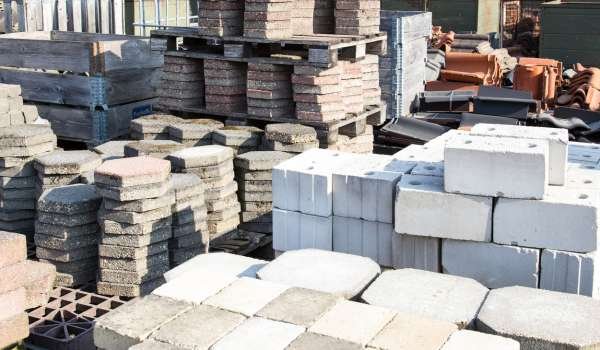
In addition to being environmentally beneficial, sustainable architecture may also be cost-effective. Think of using reused bricks, recycled metal, or recovered wood—all of which provide distinctive aesthetics and financial advantages. These materials are inexpensive and have a positive environmental effect. Numerous recycling facilities and demolition sites provide reasonably priced, superior materials that may give your house personality and sustainability.
How to Locate a Trustworthy and Economical Contractor
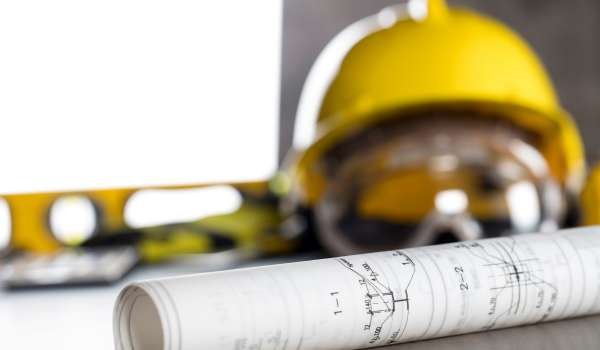
Your budget may or may not be affected by your choice of contractor. Seek for contractors that have a history of adhering to budgets and managing projects well. To make sure you discover someone who respects your financial limits, do interviews, verify references, and compare quotations. A competent contractor will collaborate with you to identify economical alternatives without compromising timeliness or quality.
Getting the Best Deal by Bargaining With Contractors
In order to get a fair price from contractors, negotiation is crucial. Don’t be afraid to talk about your budget and ask about strategies to save labor or material expenditures. Some ways that contractors might save money include via bulk discounts, off-season building offers, and flexible payment plans. Without taking any short cuts, a little delicate negotiating might provide substantial cash gains.
A thorough construction plan is essential to preventing unforeseen expenses

By removing expensive last-minute alterations or modifications, a well-organized strategy may save thousands of dollars. Work together with your contractor to specify every aspect of the construction, from the final materials to the layout. Your budget may be disrupted by unanticipated costs, delays, or mistakes that are prevented by this foresight. A thorough strategy guarantees a more seamless operation with fewer unforeseen costs.
Understanding When to Save and When to Spend: Do It Yourself vs. Hiring Experts

Reduce House Construction Cost by smartly deciding when to take on do-it-yourself (DIY) tasks and when to hire professionals. Even while do-it-yourself projects might save money, it’s important to consider where they’re safe and practical. Simple interior work, painting, and gardening are good examples of do-it-yourself projects that let you save labor expenses without sacrificing quality. However, for safe and effective completion, complicated systems like structural, electrical, and plumbing installations need to be handled by professionals.
Attempting this without expert assistance may result in future safety hazards and expensive repairs. To choose the optimal course of action, balance the risks and rewards of each assignment. You may keep construction expenses down while maintaining quality and safety by concentrating on do-it-yourself (DIY) projects for smaller, more doable tasks and employing professionals for more specialized work. You may save money with this well-rounded strategy without compromising the lifetime and structural integrity of your house.
Clever Design Decisions That Lower Building Expenses
Costs may be considerably reduced by selecting a simple, useful design. Steer clear of sophisticated architectural elements and complicated forms that need for specialized materials or labor. Choose a simple design that makes the most of available space and cuts down on building time. Simple design decisions, like as roofing type and square footage, result in quicker, less expensive construction without compromising comfort.
Constructing Compact and Effective Areas For An Affordable House
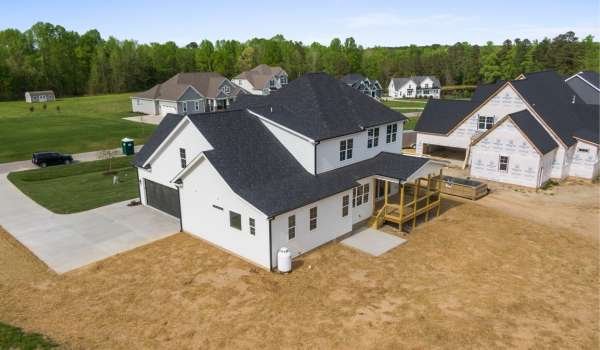
Reduce the cost of constructing a house by concentrating on creating a more compact, functional area that satisfies your requirements without needless additions. Costs may rise dramatically for larger houses since they need more resources, labor, and materials. You may create a comfortable and economical living place by designing a small, practical house that only uses what is necessary.
A smaller home is a sensible option for long-term savings since it also translates into lower maintenance costs over time. You may design a fashionable and comfortable house that suits your lifestyle and budget by putting usefulness above more room. Well-considered design decisions, such multifunctional spaces and effective floor plans, optimize your home’s use without sacrificing square area. This method assists you in creating a well-thought-out, reasonably priced home that meets all of your needs without going over your budget.
Open floor plans and multipurpose rooms to save costs
By doing away with the requirement for distinct rooms, multipurpose spaces save money on labor and building supplies. For example, an open floor plan eliminates the need for extra walls or doors and gives the impression of space and airiness. To save space and simplify construction, think about integrating your living, dining, and kitchen rooms into one adaptable one.
Choosing the Best Site to Reduce Land and Utility Costs
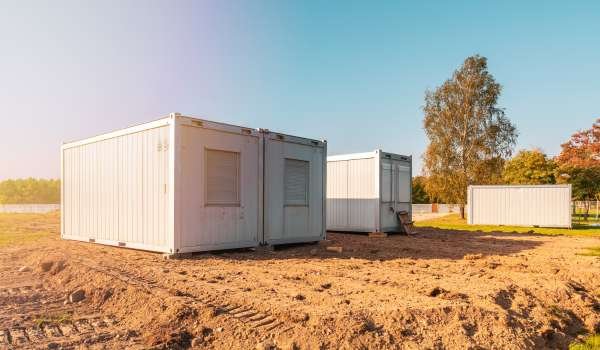
The plot you choose may have a big impact on how much it will cost to build. Choose a site that reduces the need for extra utility installations or grading. You may stay within your budget and ensure convenience by using a flat property that is conveniently located near services like gas, electricity, and water. This can save thousands of dollars in building costs and time.
Creating a Budget-Friendly Minimalist Landscape Design
Although landscaping may be expensive, a simple approach cuts expenses down. Native plants are less expensive to install and maintain over time since they need less moisture. Without the expense of complex landscaping projects, simple, practical solutions that steer clear of too-hardscaping—such as intricate plant beds or stone pathways—provide beauty.
How to Reduce the Price of Electrical and Plumbing Installations

Installation expenses are decreased by effective electrical and plumbing design. Maintain the alignment of these systems to reduce the amount of work and resources needed. Think about energy-efficient fixtures that result in long-term savings in addition to immediate cost reductions. Investing in simple, useful installations guarantees longevity and provides instant cost savings.
Reasonably priced flooring options that are both fashionable and useful
Although flooring may be a costly component of building a house, there are less expensive options that are just as stylish and long-lasting. Engineered wood, ceramic tiles, and vinyl planks are affordable alternatives that mimic the appearance of high-end materials. You may have a high-end look without paying a high-end price if you choose carefully.
Saving Money on Doors and Windows Without Giving Up Style

Doors and windows have a big influence on your home’s appearance and cost. Generally speaking, standard-sized alternatives are less expensive than bespoke designs. Take into account energy-efficient versions, which reduce heating and cooling expenses over time while being more costly initially. To further save costs, look for sales or bulk discounts.
Energy-Saving Insulation Solutions to Reduce Expenses Over Time
Investing in adequate insulation may reduce the cost of construction a house and save money over time. Good insulation, such as foam or blown-in cellulose, provides a cost-effective option with significant energy-saving advantages. You may ensure year-round comfort without increasing your heating and cooling expenses by selecting high-quality insulation.
By minimizing energy waste, proper insulation helps you keep your home at a consistent temperature and lessen your need on expensive heating and cooling equipment. Over the course of your home’s life, this initial insulation investment results in significant savings, making it a prudent decision to keep construction and ongoing energy expenses under control.
Cutting Expenses with Effective Lighting and Ventilation
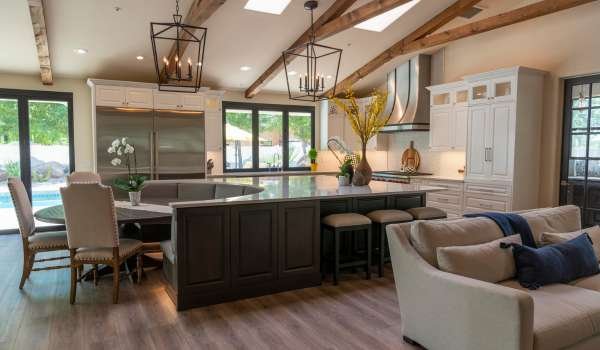
The requirement for electrical lighting and cooling is decreased when windows and doors are positioned strategically to allow for natural ventilation and illumination. Open areas, large windows, and skylights reduce energy use by letting in natural light and fresh air. In addition to helping the environment, an energy-efficient house also helps your pocketbook.
Purchasing in Bulk: How to Reduce the Cost of Building Supplies
Bulk purchases of materials can provide substantial cost reductions. Collaborate with your contractor to make bigger purchases of materials like cement, tiles, or timber. Bulk purchases may qualify for discounts from suppliers, which makes this a good method to save expenses without sacrificing quality. Purchasing in bulk is especially advantageous for high-use commodities that are essential to the building process.
Choose Low-Tech Roofing Options That Offer Excellent Value
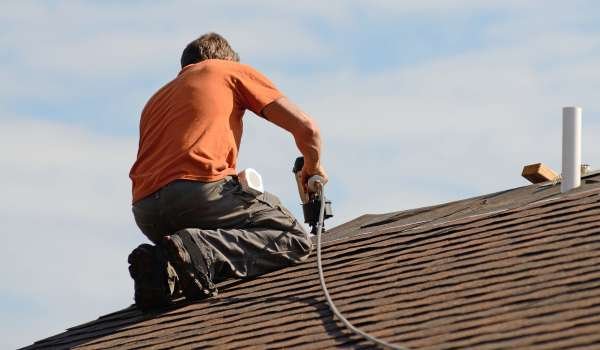
Choose affordable roofing options that nevertheless provide protection and durability to reduce the cost of construction a house. Even though roofing is an essential component of any house, it doesn’t have to break the bank. Compared to more complex designs, simple roofs like gable or hip roofs are simpler, faster, and need less work and resources to build.
Longevity and durability are provided by reasonably priced materials like metal shingles or asphalt, which efficiently protect your house without breaking the bank. These materials are excellent options for long-lasting protection since they are not only reasonably priced but also resistant to weather. Choosing straightforward roof designs and reasonably priced, long-lasting materials can guarantee high-quality roofing without going over your spending limit.
Advice For Avoiding Typical Construction Delays And Additional Expenses
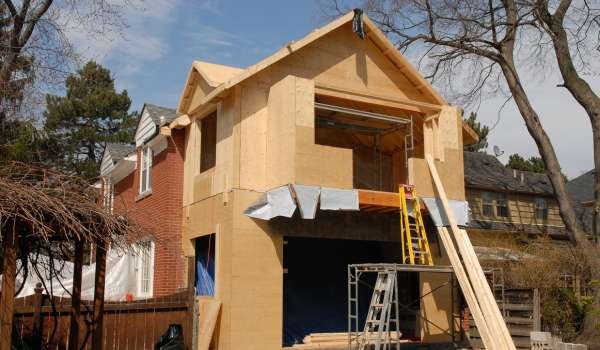
Proactive planning is crucial since delays may cause construction expenses to rise rapidly. To identify any problems early, start by working closely with your contractor and setting up frequent check-ins. Good communication keeps all work on schedule and reduces misunderstandings. When creating your timetable, take into account variables like supplier availability, weather, and labor schedules, since they may have a big influence on the project’s progress. By accounting for these factors beforehand, interruptions that might result in unforeseen costs can be avoided.
By maintaining organization and foreseeing any obstacles, you can keep your project on track and under budget, which guarantees a more efficient and economical building process from beginning to end.
How to Monitor Costs During Construction and Maintain Your Budget
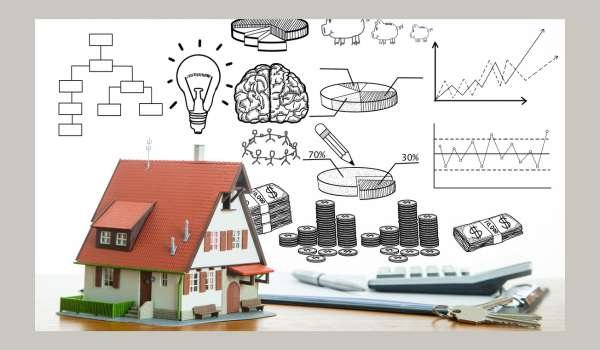
Paying careful attention to every cost is the first step in preventing overspending. To retain a real-time snapshot of your budget and record every transaction, set up a basic monitoring system, such a spreadsheet or construction management software. Maintaining up-to-date records is crucial since they clearly illustrate where your money is going and point out any areas that could need modification.
Maintaining this habit helps you identify any patterns of excessive spending and make rapid adjustments to remain under your budget. As the project moves forward, regular evaluations also help you spot areas where you may cut costs, which helps you prevent any budget shocks. In addition to keeping you fiscally disciplined, regular supervision gives you peace of mind that your building budget is on track.
Read more : How To Estimate Home Building Costs
Conclusion
After construction is finished, do a thorough walkthrough to reduce the cost of construction a house. Because fixing problems after you move in might be expensive, this last check is essential to guaranteeing the quality and completeness of your new house. Make sure that everything satisfies your requirements and that no repairs or modifications are required by carefully inspecting every aspect, from fittings to finishes.
By recognizing and resolving any issues early on, you may avoid costly post-construction repairs and maintain your budget. You may have a trendy and reasonably priced house free from unforeseen costs if you make sure everything meets your needs during this final evaluation. This comprehensive assessment gives you peace of mind that your home was finished to your satisfaction and without needless expenses, enabling you to move into a tastefully decorated, reasonably priced area that suits your requirements.
